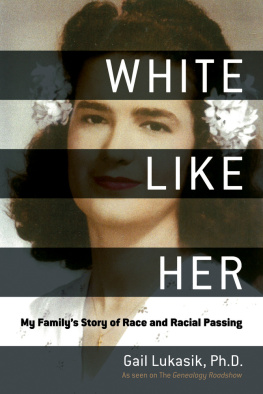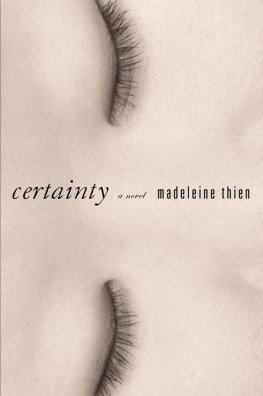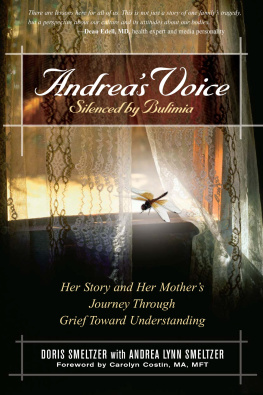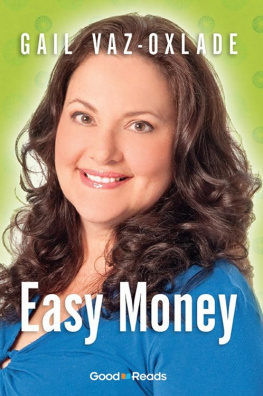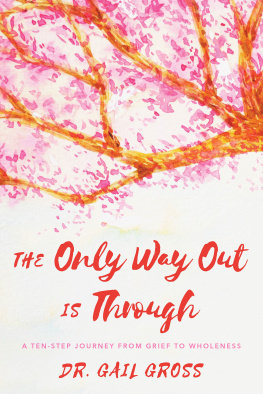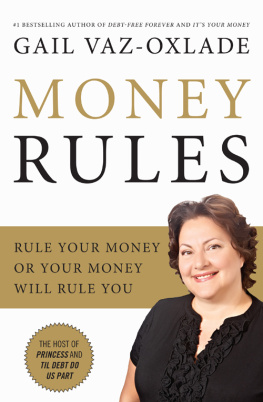

Copyright 2017 by Gail Lukasik
All rights reserved. No part of this book may be reproduced in any manner without the express written consent of the publisher, except in the case of brief excerpts in critical reviews or articles. All inquiries should be addressed to Skyhorse Publishing, 307 West 36th Street, 11th Floor, New York, NY 10018.
Skyhorse Publishing books may be purchased in bulk at special discounts for sales promotion, corporate gifts, fund-raising, or educational purposes. Special editions can also be created to specifications. For details, contact the Special Sales Department, Skyhorse Publishing, 307 West 36th Street, 11th Floor, New York, NY 10018 or .
Skyhorse and Skyhorse Publishing are registered trademarks of Skyhorse Publishing, Inc., a Delaware corporation.
Visit our website at www.skyhorsepublishing.com.
10 9 8 7 6 5 4 3 2 1
Library of Congress Cataloging-in-Publication Data is available on file.
Cover and interior photographs courtesy of the author
ISBN: 978-1-5107-2412-9
eISBN: 978-1-5107-2415-0
Printed in the United States of America
For my mother, Alvera Frederic Kalina, whose courage lit the way. Thank you, mom, for your bravery and sacrifice.
The Central Figures in White Like Her
Gail Lukasik
B: Sept. 9, 1946
Alvera Frederic Kalina______Harold J. Kalina
B: Oct. 21, 1921, NO
B: Aug. 26, 1918, Ohio
D: Apr. 5, 2014, Ohio
D: Dec. 20, 1996, Ohio
Maternal First Cousin
Ula Duffant B: 1931, NO
Grandparents
Azemar Frederic____________Camille Kilbourne
B: Jan. 1897, NO
B: Jan. 1905, NO
D: July 1946, NO
D: Oct. 1982, NO
Stephen Kalina_____________Mary Thiery
B: 1895, Ohio
B: 1893, Ohio
D: 1949, Ohio
D: 1967, Ohio
1st Great Uncle and Aunt
Edward Nicholls___________Laura Baker
B: 1883, NO
B: 1884, NO
D: 1948, Ohio
D: 1968, Ohio
2nd Great-Grandfather and Grandmother
Leon Frederic Jr.___________Celeste Girard
B: Aug. 1868
B: 1872
D: Sept. 30, 1913
D: July 2, 1930
3rd Great-Grandfather and Grandmother
Leon Frederic, Sr.___________Philomene Lanabere
B: 1838, NO
B: 1840, NO
D: 1905, NO
D: 1891, NO
4th Great-Grandfathers and Grandmothers
Ursin Frederic_____________Roxelane Arnoux
B: Aug. 1, 1792
B: 1808, Cuba
D: 1856
D: 1882
Bernard Lanabere___________Felicite Dauphin
B: 1811
B: 1808
D: 1883
D: 1878
5th Great-Grandfathers and Grandmothers
Joseph Frederick Lestinet___________Luison Santilly
B: abt. 1743
B: 1765
D: 1813
D: ?
Catiche Dauphin_____________________Manuel Mayronne
B: 1782
B: 1790
D: 1849
D: 1850
6th Great-Grandfathers and Grandmothers

7th Great-Grandmother
Maria: B: abt. 1744 D: ?
Foreword
By Kenyatta D. Berry, JD
Host, Genealogy Roadshow (PBS)
W HEN THE producers of Genealogy Roadshow approached me prior to the second season and said, We have a story for you, I was hesitant at first. It was a story about racial passing. Gail Lukasik, a mystery author, had come to the Roadshow asking if her mother had passed for white. She wasnt sure of her mothers racial heritage. I hesitated because I didnt know how much Gail truly knew about her mother.
In the African American community, it is an unwritten rule that you do not out a person who is passing for white. And I was going to out her mother on a national television show. I felt as if I was betraying Gails mother, because I understood that she made a great sacrifice and a painful choice. As an African American woman who had family members who passed, I knew Gails mother had turned her back on her family, her friends, and her heritage. And in doing so, shed assumed an identity that she barely knew but worked so hard to achieve. Her mother must have always lived in fear that someone might find her out. What if her children were born with darker skin? How could she explain that to her white husband?
The producers assured me that Gail knew about her mothers secret. But I still had trepidations. How would Gail react to me telling her story? How would our viewers react to this subject? But I knew it was a story that needed to be told.
Gail showed up at Genealogy Roadshow with her family and lots of anticipation. She had no idea what I would reveal about her mothers ancestry or how it would change her life. We were both nervous, but once we started talking our nerves subsided.
After learning more about her mothers racial ancestry, I knew Gail would be compelled to write a book. I also knew that we would share a special bond because she took this journey with me.
White Like Her: My Familys Story of Race and Racial Passing is the culmination of that journey. This book adds to the ongoing conversation about race and racial identity in America because it looks at the ramifications of institutionalized racialism and racial passing through one familys storythe Frederic familya multiracial family with deep roots in Louisiana.
Passing is something we dont talk about in our society, but in the African American community we know it exists. Its part of our collective history as Americans. I would guess that most Americans, especially those of the younger generation, have never heard these terms. The one-drop rule is one of the many reasons that Gails mother and many African Americans choose to pass for white. Passing meant better opportunities for jobs, education, and quality of life. According to statistics, between 1880 and 1925 approximately twelve thousand blacks crossed the color line each year in hope for a better life. Considering those statistics, I would also guess that many Americans, like Gail, have benefitted from an ancestor who crossed the color line to hide their racial identity and have no idea of their mixed racial heritage.
In A Chosen Exile by Allyson Hobbs, the first chapter is titled White Is the Color of Freedom. If you think about it, that idea has been true since slavery began in America and is still true. Racism and the continued oppression of African Americans exist today. So, imagine yourself born in Louisiana with white skin and multiracial ancestry but classified as black because of the one-drop rule. You would face discrimination, low or no education, and dim job opportunities. What would you do? Would you choose to leave your family behind? These are the questions that White Like Her raises that will help us as a nation continue the discussion about racial identity. In her exploration of racial identity, Gail points out that not all African Americans who could pass for white did, adding another dimension to the racial discourse.
The book also tells the Frederic familys story, which is important in helping us understand Americas complex racial history. This familys genealogy exposes the various sexual relationships between white men, free people of color, female slaves, and white women. By giving the historical background connected to each generation, the book shows that while the roles were firmly defined, the races were less defined because of blurred racial lines when it came to their offspring. White men had children with free women of color and slaves. The status of the child was dependent upon the status of the mother. In Louisiana, this created a social system where free people of color were a step above slaves but below the poorest white farmer.
Next page
